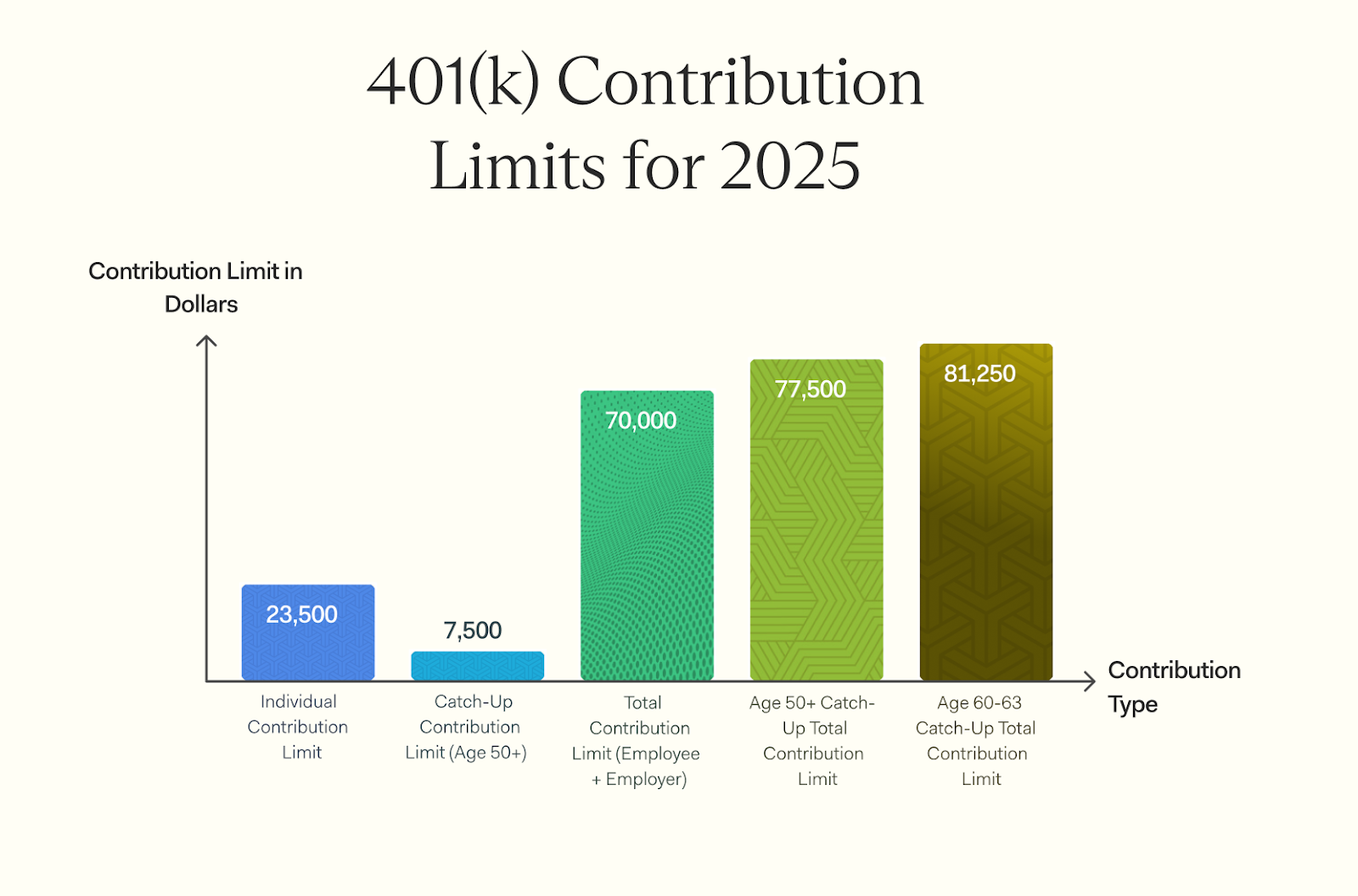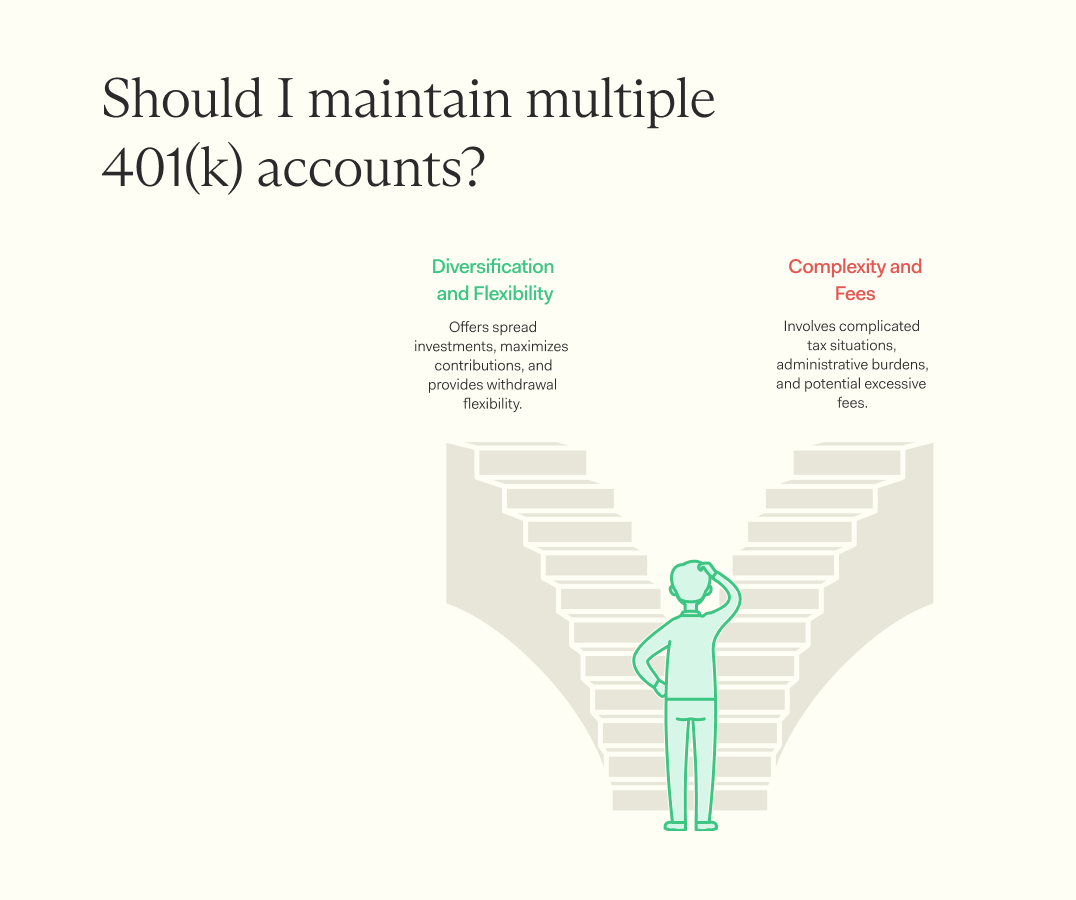Giving money to your grandchildren can significantly shape their future, providing them with opportunities and financial stability that might otherwise be out of reach.
You've changed jobs a few times, and now you're staring at several 401(k) statements wondering if you're breaking some hidden rule.
Good news: those multiple retirement accounts aren't just legal – they might be your secret weapon for building a more flexible retirement strategy.
But like any powerful tool, understanding how to wield multiple 401(k)s can make the difference between merely saving and truly maximizing your retirement potential.
Think of each 401(k) as a piece of your retirement puzzle. Whether you're juggling accounts from past employers or considering adding a side gig with its own retirement plan, the rules around multiple 401(k)s impact everything from your annual contribution limits to your tax strategy.
Let's break down what you need to know about managing multiple retirement accounts – and more importantly, how to turn them into your advantage for long-term financial sustainability.
As a self-employed individual, you might establish a solo 401(k), along with other accounts tied to former employers. There’s no restriction on the number of active 401(k) plans. And don’t forget about Roth IRAs—another valuable tool that can add tax-free growth to your retirement mix.
The IRS stipulates guidelines regarding the annual monetary contributions to these accounts. The sum total of contributions you can make to all your 401(k)s is subject to the yearly limits defined by the IRS. The total contributions you can make are also influenced by your eligible compensation, which determines the maximum amount you can contribute under various retirement plans.
Can you contribute to more than one 401(k) account? Each 401(k) plan you participate in may have a separate limit, which is important to consider to avoid exceeding the overall contribution caps. What are the limits for combined contributions across multiple 401(k) accounts?

Managing your 401(k) contributions can get a bit tricky, especially if you’re juggling more than one account. For self-employed individuals, the contribution limits are often calculated based on net earnings—your income after business expenses.
In 2025, the standard contribution limit for individuals is $23,500. This applies to your total contributions across all 401(k) accounts you might have.
If you're age 50 or older, you're eligible for an additional $7,500 as a catch-up contribution, bringing your total possible contribution to $31,000. This provision allows older workers to save more as they approach retirement.
Be sure to track your contributions across all accounts to avoid exceeding these limits.
Employer contributions have their own set of rules and don’t count against your individual cap. In 2025, the total limit for combined employee and employer contributions is $70,000.
If you’re 50 or older, your total contribution limit—including catch-up—rises to $77,500.
For individuals aged 60 to 63, there's a higher catch-up allowance, pushing the limit to $81,250.
Employers can match your contributions up to these thresholds, giving you a great opportunity to boost your retirement savings significantly.

Having multiple 401(k) accounts can offer diversification in your retirement savings. This means you can spread your investments across different accounts, reducing the risk of having all your retirement funds tied to a single investment.
If you change jobs frequently or work as a freelancer, having multiple 401(k) accounts allows you to continue saving for retirement with each employer or client, maximizing your contributions and potential growth over time.
Furthermore, maintaining separate 401(k) accounts provides flexibility in managing your retirement withdrawals. For example, if one of the accounts performs exceptionally well, you may choose to withdraw from that specific account and let others continue growing.
It also offers more control when it comes to choosing different investment options available within each account based on your risk tolerance and financial goals.
It's essential to also consider the downsides of managing multiple 401(k) accounts.
Managing multiple accounts can complicate your tax situation, as you need to consider the impact on your income taxes when making withdrawals. One major challenge is the potential for increased intricacy and uncertainty in handling various accounts simultaneously, which can lead to oversight of fees and investment performance.
Moreover, maintaining coherent investment strategies across different accounts may become demanding.
Having numerous 401(k) accounts might also increase administrative responsibilities due to paperwork and records associated with each account, resulting in added time and effort for keeping track of contributions and distributions accurately.
In addition, holding multiple 401(k) accounts could expose individuals to a higher likelihood of paying excessive fees since different plans may have varying fee structures. This can significantly impact how much you have available for retirement over time.
When handling multiple 401(k) accounts, consolidate old accounts to simplify your portfolio. Keep a close eye on contributions and fees carefully to stay on top of your retirement plan management.
Consolidating old 401(k) accounts can be beneficial, reducing your administrative load. By bringing multiple accounts together, you may find it simpler to track your contributions and fees effectively.
However, before consolidating, compare investment options, fees, and features like loan provisions across plans, as you may lose certain benefits by rolling over from one plan to another.
This process might also assist in better managing your investments and assessing your overall portfolio as a whole. If you have changed jobs several times, consolidating old 401(k) accounts can help keep track of your retirement funds more efficiently.
However, maintaining separate accounts might be advantageous in some situations, such as when an old plan offers unique investment options, lower fees, or special creditor protections not available in your current plan or an IRA.
It's important to consider any potential fees or tax implications when combining old 401(k) accounts into one account. Also, ensure that the new plan offers ample investment options and aligns with your current financial goals and risk tolerance levels.
When managing multiple 401(k) accounts, it's essential to keep track of contributions and fees. It's vital to monitor the total amount you can contribute across all your 401(k) plans to comply with IRS limits.
This entails being mindful of both your individual contribution limits and any employer contributions to avoid exceeding the annual maximum allowed.
Understanding the different administrative fees associated with each 401(k) account is crucial to evaluate their impact on your retirement savings. Paying close attention to these fees can help in making informed decisions about consolidating old 401(k) accounts and effectively managing multiple plans, ensuring that you save as much as possible for retirement without unnecessary costs affecting your savings.
Managing multiple 401(k) accounts is possible, but staying organized is crucial. Remember that contribution limits apply across all your accounts combined, not separately.
Consider consolidating older accounts through rollovers to simplify paperwork, reduce fees, and gain better visibility of your total retirement savings. This makes it easier to create a unified investment strategy.
With regular review and careful planning, your various retirement accounts can work together effectively to build your financial future.
Yes, you can have multiple 401(k) plans at the same time if you work for more than one company or are self-employed.
Each 401k plan has an annual limit on how much you can contribute. The Internal Revenue Service sets these limits, and they may change each tax year. Your total contributions to all your plans cannot exceed this limit, and it could impact your taxable income.
You should be aware of different rules for each plan before deciding which one to participate in. A financial advisor can help guide you through this process.
Different types of retirement accounts like SIMPLE IRA, Traditional IRA, SEP IRA have their own specific rules and contribution amounts set by the IRS that need to be considered while investing in more than one retirement savings plan.
Yes! Individuals who are age 50 or older may be eligible to contribute up to an additional amount as part of catch-up contributions beyond the annual deferral limit set by IRS every following year.
Withdrawing money before reaching full retirement age (59½ years old), might lead to you paying taxes on the money along with an early withdrawal penalty unless certain conditions apply.